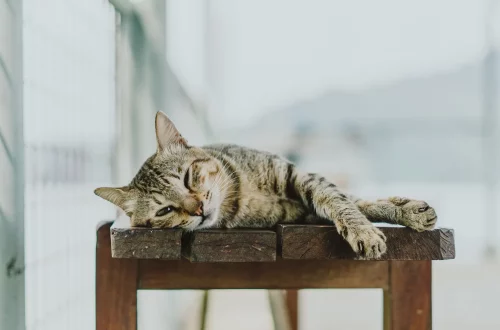
The Best Small Dog Balls for Fun and Exercise
Small dogs bring immense joy and companionship to our lives, yet they also require ample exercise and stimulation to maintain their health and happiness. One of the most effective ways to achieve this is through play, and what better way to engage your small furry friend than with dog balls? These toys not only provide endless entertainment but also promote physical activity, mental stimulation, and bonding between you and your pet. With a plethora of options available on the market, it can be overwhelming to choose the right one.
Selecting the perfect ball for your small dog involves considering factors such as size, material, and durability. A well-chosen ball can serve as a tool for exercise, a means of mental engagement, and a source of joy for your canine companion. Whether you have a spirited terrier or a cuddly Chihuahua, incorporating playtime with dog balls into your routine can significantly enhance your pet’s quality of life. Let’s dive into the most suitable options available, ensuring that your small dog has the best play experience possible.
Choosing the Right Size and Material
When selecting a ball for your small dog, size and material play crucial roles in ensuring safety and enjoyment. A ball that is too large may be difficult for your dog to carry, while a ball that is too small poses a choking hazard. Generally, small balls with a diameter of 2 to 3 inches are ideal for tiny breeds. These sizes allow for easy handling and encourage your dog to engage in playful behavior.
Material is equally important; you want to choose a ball made from non-toxic, durable materials that can withstand your dog’s chewing and playing habits. Rubber balls are popular for their sturdiness and bounce, making them great for active play. On the other hand, soft fabric balls may be more suitable for gentle play, especially for dogs with sensitive teeth.
Additionally, consider the ball’s texture. Some dogs prefer smooth surfaces that are easy to grip, while others may enjoy textured balls that provide a better grip and sensory stimulation. For dogs that love to play fetch, choosing a ball that floats can add an exciting element to playtime, especially during water activities.
Lastly, ensure that the ball is easy to clean. Playtime can get messy, and having a washable ball can help maintain hygiene and ensure your pet stays healthy. Opting for materials that are resistant to dirt and bacteria will save you time and effort in the long run.
Interactive Balls for Mental Stimulation
Interactive dog balls can transform the simple act of play into a stimulating experience that challenges your small dog’s intellect. These toys often incorporate features that require your dog to think critically to receive a reward, such as treats. This type of engagement is essential for small dogs, as they can easily become bored and anxious without mental stimulation.
One popular option is treat-dispensing balls. These toys are designed with compartments that hold treats, encouraging your dog to roll the ball around to release the goodies inside. Not only does this promote physical activity, but it also taps into your dog’s natural instincts to hunt and scavenge for food.
Another innovative choice is the puzzle ball, which features various obstacles and compartments that your dog must navigate to access treats. This type of toy can keep your dog occupied for extended periods, alleviating boredom and reducing destructive behaviors often associated with lack of stimulation.
Moreover, interactive balls can also aid in training. By associating specific commands with the ball, you can teach your dog cues such as “fetch” or “drop it.” This not only enhances your dog’s obedience but also strengthens the bond between you two as you engage in collaborative play.
Keep in mind that while interactive balls are fantastic for mental stimulation, they should not replace regular physical activity. Combining interactive play with traditional fetch games will provide a well-rounded experience for your dog.
Durability and Safety Features
Durability is a fundamental aspect to consider when selecting a ball for your small dog, as it directly impacts the toy’s lifespan and your pet’s safety. Small dogs can be surprisingly strong chewers, and choosing a ball that can withstand rigorous play is essential to prevent potential hazards.
Look for balls that are specifically designed for durability, such as those made from high-quality rubber or thick, reinforced fabric. These materials can endure your dog’s chewing without easily breaking apart, ensuring that they remain safe during play. Avoid balls that are made from cheap plastic or flimsy materials, as they can pose choking risks and may break down over time, leading to ingestion of small pieces.
Another critical safety feature to consider is the absence of small components that could be detached during play. Balls with squeakers or other small parts may provide additional excitement, but they can also become choking hazards if your dog manages to tear them apart. Opt for solid balls or those with securely embedded squeakers to minimize risks.
Additionally, consider balls that are brightly colored or designed with patterns that are easy for both you and your dog to spot. This is particularly useful during outdoor play, as it helps prevent loss and ensures that your dog stays engaged.
Regularly inspect your dog’s balls for signs of wear and tear. If you notice any damage, it’s best to replace them immediately to maintain a safe play environment. By prioritizing durability and safety, you can ensure that playtime remains fun and risk-free for your small dog.
Incorporating Balls into Daily Exercise Routines
Incorporating balls into your small dog’s daily exercise routine can significantly enhance their physical health and overall well-being. Regular playtime not only helps maintain a healthy weight but also combats behavioral issues linked to boredom and inactivity.
Start by designating specific times each day for ball play. Consistency helps your dog understand when to expect playtime, making it an exciting part of their daily routine. Morning sessions can energize your dog for the day ahead, while evening play can help burn off excess energy before bedtime.
Mix up your play sessions to keep things interesting. If you usually play fetch in the yard, consider taking the ball to a local park or exploring new outdoor spaces. This allows your dog to experience different environments and scents, stimulating their senses and keeping them engaged.
In addition to traditional fetch games, you can introduce agility exercises using balls. Set up a small obstacle course with cones or markers, encouraging your dog to navigate through them while carrying or chasing the ball. This not only increases their physical activity but also requires focus and coordination.
Lastly, consider inviting other small dog owners for playdates. Socializing with other dogs can enhance your pet’s play experience, as they’ll have the opportunity to engage in playful competition. This can lead to increased physical activity and creates a fun environment for everyone involved.
Remember, the key to a successful exercise routine is to keep it enjoyable for your dog. Pay attention to their energy levels and adjust the intensity and duration of playtime accordingly. By making ball play a regular part of your small dog’s life, you are contributing positively to their health and happiness.
In conclusion, selecting the best small dog balls involves considering size, material, interactive features, durability, and how they fit into your dog’s daily routine. With the right choices, you can provide your furry friend with hours of fun and exercise, leading to a more fulfilled and healthier life.
*Disclaimer: This article is for informational purposes only and does not constitute medical advice. For any health-related concerns regarding your pet, please consult a veterinarian.*




